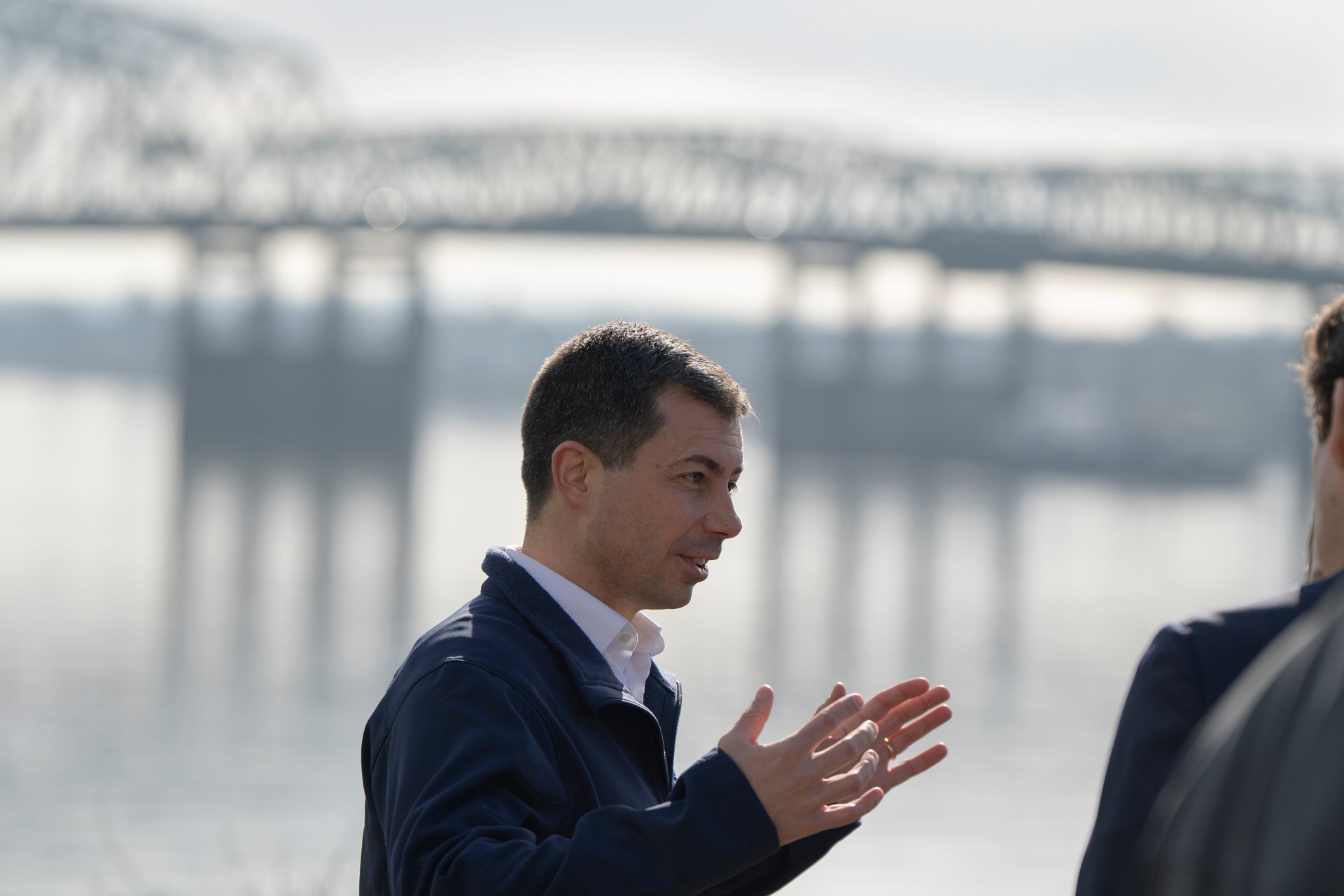Buttigieg visits interstate highway bridge in Pacific Northwest slated for seismic replacement
U.S. Transportation Secretary Pete Buttigieg is in the Pacific Northwest visiting a major bridge that's slated for a multibillion-dollar replacement

VANCOUVER, Wash. (AP) — U.S. Transportation Secretary Pete Buttigieg on Tuesday toured the century-old Interstate 5 bridge that connects Portland, Oregon, with southwest Washington state, a vital but earthquake-vulnerable structure that's set to be replaced as part of a multibillion-dollar project supported by federal funding.
Suggested Reading
The bridge — so old that horses were still a main mode of transportation when it opened — now carries more than 130,000 vehicles a day over the Columbia River between Portland and Vancouver, Washington, according to regional transportation agencies. It's a key component of I-5, which runs the length of the West Coast, but its congestion frequently impairs travel and freight movement.
Related Content
Seismologists say the Pacific Northwest is at risk of a severe earthquake — magnitude 9 or greater — that could destroy significant parts of the region. The bridge is at risk of collapse in a major quake, which could kill many people and sever a crucial transportation link in such an emergency. Plans to replace the bridge have been in the works for decades.
“We don’t know whether ‘the big one’ is tomorrow or 100 years away, or many hundreds of years away, but we know that we should be getting this bridge into a more resilient state,” Buttigieg told reporters.
The bridge, which opened in February 1917, was the first automobile span to cross the Columbia River, and it became part of I-5 in 1957. A second span opened the next year. They include sections that lift to allow ships through.
Washington Gov. Jay Inslee, Oregon Gov. Tina Kotek and transportation authorities joined Buttigieg on the bridge tour Tuesday. Donning hard hats and neon vests, they walked out on one of the steel catwalks, just feet away from vehicles zooming by, and climbed steep, narrow stairs up to one of the bridge’s operating rooms.
As the room vibrated loudly from the traffic below, officials involved with the bridge replacement project talked about the plans and explained the maintenance required to keep the aging bridge running. The cables that lift and lower the bridge to shipping traffic have to be greased by hand, and the grease alone costs about $40,000 a year, on top of $1.2 million in annual operating costs.
“If we do nothing, it’s still an expensive thing to have and maintain,” said Greg Johnson, the project’s program administrator.
Once back on solid ground near the Washington state entrance to the bridge, Buttigieg lit candles on a cupcake commemorating the bridge’s 107th birthday.
“It’s one thing to see the project description on a sheet of paper,” Buttigieg said. “It’s another to stand in that bridge house and feel the entire room vibrate with the energy that is going up and down that bridge with all of that traffic.”
The Interstate Bridge Replacement Program received a boost in December when it was awarded $600 million in federal funds under the bipartisan infrastructure law. The money will come from the National Infrastructure Project Assistance or “Mega” program, a U.S. Department of Transportation grant initiative that was created by the law to support projects that are too large or complex for traditional funding streams.
The Oregon and Washington Legislatures have each committed $1 billion to the project, which has also applied for additional federal funding.
Replacing the bridge is estimated to cost at least $6 billion. Further analysis and assessments are needed before construction, which is tentatively set to begin in late 2025 or early 2026.
Democratic Sen. Patty Murray of Washington, chair of the Senate Appropriations Committee, has long advocated for the bridge replacement and said she had invited Buttigieg to visit.
"While all of the reports and data make clear that we needed to replace the I-5 bridge years ago, you’ve got to walk on the bridge to really get it,” Murray said in a news release.
Bill Hess lives along Vancouver's waterfront and can see the bridge from his home. He said the hours he used to spend in traffic commuting from the Portland area to Vancouver, including on the I-5 bridge, pushed him to move to the Washington state side of the river to be closer to work.
“This is going to be a hassle because of the construction, but it's going to be well worth it,” he said. “It's going to be a huge improvement for the Northwest.”